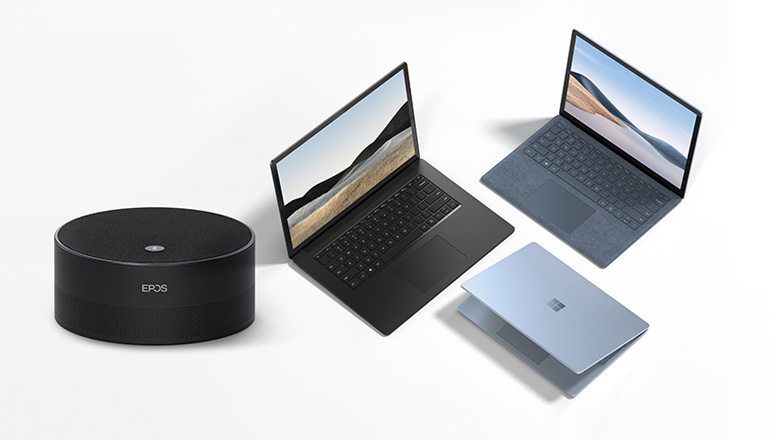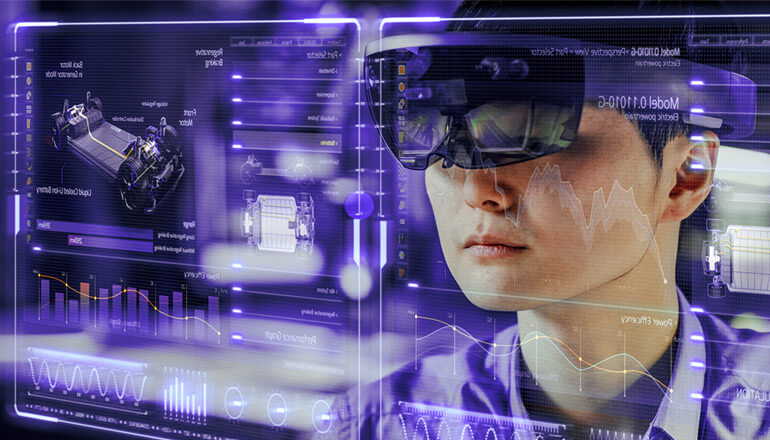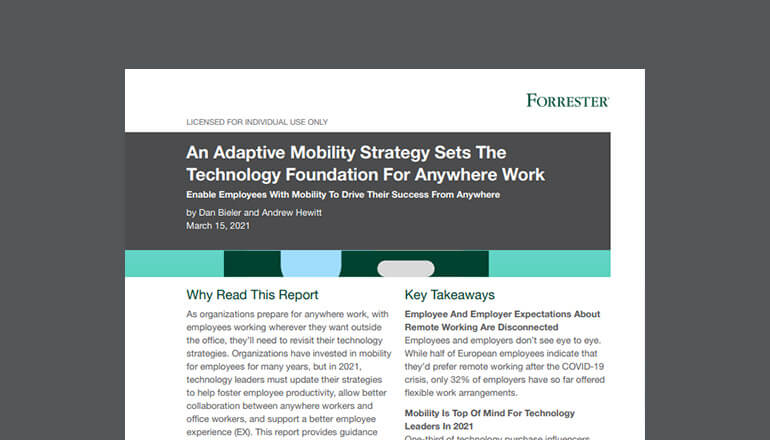Tech Journal Customer Experience and Employee Experience Go Hand in Hand
By Anna Donnelly / 28 Jul 2021 / Topics: Mobility Customer experience

Digital transformation impacts much more than just customer experience.
If you have anything to do with technology these days, digital transformation is a phrase with which you’re almost painfully familiar. We’ve been hearing it for years now because of the rise of cloud technology and, while definitions of what it means vary by organisation, the expected outcome is always about how modernised technology will improve your bottom line.
At the heart of digital transformation is a focus on improving customer experience. Digital transformation and customer experience are inexorably linked with the purpose of building trusted brands and customer loyalty through technology and, ultimately, producing positive financial outcomes. Digital transformation, however, impacts much more than just customer experience.
The disruptive events of 2020 pushed customer experience and digital transformation into the background in favour of managing unprecedented change. Instead of asking, “How do we improve our customer experience and our bottom line through modern technology?” leaders had to ask much more simplistic, but scary questions such as, "How do we use modern technology so that we can continue to do business?”
I don’t need to tell you that the number one priority in the last year for leaders has been to keep the core of their business running. You lived it.
Some companies who previously thought that jobs could never be performed at home had to figure out how to move their on-premises workforce to remote operations. Others thought they were doing okay on the digital transformation front because of innovative, modernised customer-facing technology, only to find that the back office was suffering because of outdated hardware, enterprise operations and productivity applications, limited support options and an over-worked IT staff.
Even more (dare I say, all) companies fell victim to a complete underestimation of the impacts that working remotely would have on their employees. In fact, the Forrester report, Predictions 2021: Employee Experience, found that: “By the end of 2021, 1 in 4 information workers will be supported in their daily work by software bots, robotic process automation or AI.”
As a result, leaders are now faced with questions about measuring work-life balance, keeping employees engaged and connected to others, providing seamless end-user experiences, connecting productivity to job satisfaction and more. Answering these questions can be intimidating for those who have had their heads buried in ERP, CRM, digital marketing and client-facing apps, but I’m here to tell you not to be intimidated. All of these questions are about customer experience’s internal-facing twin: employee experience (EX).
The intersection of customer and employee experience
We’ve been hearing about EX related to HR platforms for years, but now it’s invaded the rest of the corporate landscape in response to the impact of remote work. Brands like Microsoft, Salesforce, ServiceNow and more are talking about how their platforms address EX like they invented it as an entirely new category in the last 12 months, but it’s anything but new. Successful digital transformation and customer experience have always been dependent on enabling your employees.
"Once the pandemic hit, it became starkly clear that organizations that lacked the core elements of a mature EX strategy, and the technology to support it, were flying blind." — Forrester Predictions 2021: Employee Experience
Your employees make or break your business no matter how great your customer-facing app or the efficiency of your supply chain. Keeping employees happy is just as integral to the functioning of your business as keeping customers happy. Indeed, for service-based organisations, this is an especially critical concept because your employees are your product.
Whether you realise it or not, you’re familiar with what employees want because it’s the same thing that customers want: a great experience. That said, if you aren’t providing employees with the experience they need, they’ll do the same thing that unhappy customers do — disengage and leave you.
Think about the efforts and resources that your organisation puts into customer experience. Businesses want to know who their customers are and what they want, so they spend resources and time on market research, surveys and analytics, and then implement changes and updates based on data. EX platforms bring this kind of marketing approach to your internal organisations.
When HR organisations send out employee surveys, they’re performing market research on their internal customers. Now, non-HR EX platforms are taking it a step further to also use passively gathered data that’s already available to them about how employees are using their solutions to gain quantitative insights into their behavior.
Finding the right tool
During this year's Microsoft Ignite (Microsoft's annual conference), Microsoft's CEO Satya Nadella introduced Microsoft Viva, a newly branded product suite that represents their move into EX. As an addition to Microsoft 365 within Teams, Microsoft Viva is not only what you would expect from a market research solution, but also an engaging employee experience. There are four applications included in the Viva suite that provide end users with an engaging, seamless experience: Viva Connections, Viva Topics, Viva Learning and Viva Insights.
These applications mimic the vision for technology’s impact upon customer experience — the vision that great, functional apps drive satisfaction. A great user experience is further accomplished by the fact that these apps are found in one already familiar and easy-to-use place: Microsoft Teams.
- Viva Connections keeps employees engaged and informed.
- Viva Topics provides users with an enhanced search experience.
- Viva Learning makes it easy for employees to upskill.
- Viva Insights provides “market research” on employee behavior.
Now, Viva is just one of the many tools businesses can leverage to gather data and allocate resources to better support high levels of employee engagement. Ultimately, the goal is to develop a greater understanding of EX and implement a tool that will help your company deliver meaningful experiences moving forward.
How employees collaborate has a significant influence on employee well-being, engagement, productivity, management effectiveness and customer relationships. With the right tool, you’ll be able to gain insight into how remote and hybrid work is impacting your employees with metrics that address the effectiveness of meetings, after-hours work, internal networks and more. As a result, you can make decisions about where to act and how your actions are impacting the lives of your employees over time.
Understanding and embracing the impact of EX is even more important as businesses begin to open and the job market improves. Those dissatisfied with their employee experience will be in a strong position to go elsewhere in a market flooded with organizations competing for talent.
Retaining resources in a post-pandemic world will require companies to reevaluate their approach to meeting the needs of their employees — and I’m not talking about things like platitudes, pool tables in the breakroom or gym memberships. I’m talking about real, measurable experiences that impact the lives of your employees and their opinion of their future at your company. EX platforms, paired with the appropriate action in response to data, are great tools to safeguard against employees mimicking the behavior of dissatisfied customers.
Turn your focus to EX. Empower your teams with the technology they need to deliver memorable experiences.
About the author:
Related articles
Narrow your topic:
Customer experience Mobility Tech Journal Connected Workforce View all focus areas










